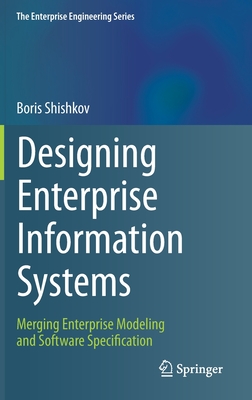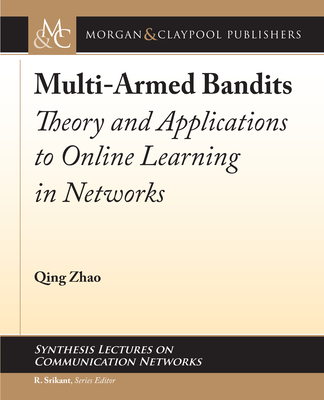Designing Enterprise Information Systems: Merging Enterprise Modeling and Software Specification
暫譯: 設計企業資訊系統:融合企業建模與軟體規範
Shishkov, Boris
- 出版商: Springer
- 出版日期: 2019-11-29
- 售價: $4,130
- 貴賓價: 9.5 折 $3,924
- 語言: 英文
- 頁數: 246
- 裝訂: Hardcover - also called cloth, retail trade, or trade
- ISBN: 3030224406
- ISBN-13: 9783030224400
海外代購書籍(需單獨結帳)
相關主題
商品描述
The content is, on the one hand, based on a conceptual invariance (embracing concepts whose essence transcends the barriers between social and technical disciplines) while on the other, the book is featuring a modeling duality, by bringing together social theories (that are underlying with regard to enterprise engineering) and computing paradigms (that are underlying as it concerns software engineering). In addition, the proposed approach as well as its guidelines and related notations further foster such enterprise-software modeling, by facilitating modeling generations and transformations. Considering unstructured business information in the beginning, the modeling process would progress through the methodological construction of enterprise models, to reach as far as a corresponding derivation of software specifications. Finally, the enterprise-software alignment is achieved in a component-based way, featuring a potential for re-using modeling constructs, such that the modeling effectiveness and efficiency are further stimulated. For the sake of grounding the presented studies, a case study and illustrative examples are considered. They are not only justifying the idea of bringing together (in a component-based way) enterprise modeling and software specification but they are also demonstrating various strengths and limitations of the proposed modeling approach.
The book was mainly written for researchers and graduate students in enterprise information systems, and also for professionals whose work involves the specification and realization of such systems. In addition, researchers and practitioners entering these fields will benefit from the blended view on enterprise modeling and software specification, for the sake of an effective and efficient design of enterprise information systems.
商品描述(中文翻譯)
本書將企業建模與軟體規範結合在一起,提供有關企業資訊系統設計的概念背景和方法指導。在這方面,兩個相應的學科(企業工程和軟體工程)以互補的方式進行考量。這樣可以有效地解決領域專家與軟體工程師之間廣為人知的鴻溝。
本書的內容一方面基於概念的不變性(涵蓋超越社會與技術學科之間障礙的本質概念),另一方面則展現了建模的二元性,將社會理論(與企業工程相關的基礎理論)和計算範式(與軟體工程相關的基礎範式)結合在一起。此外,所提出的方法及其指導方針和相關符號進一步促進了這種企業-軟體建模,通過促進建模的生成和轉換來實現。考慮到最初的非結構化商業資訊,建模過程將通過企業模型的方法論建構逐步推進,最終達到相應的軟體規範推導。最後,企業-軟體的對齊是以基於元件的方式實現的,具有重用建模構造的潛力,從而進一步提升建模的有效性和效率。為了支持所呈現的研究,考慮了案例研究和示例。這些不僅證明了將企業建模與軟體規範(以基於元件的方式)結合的想法,還展示了所提出的建模方法的各種優勢和限制。
本書主要為企業資訊系統的研究人員和研究生撰寫,也適合那些工作涉及此類系統的專業人士。此外,進入這些領域的研究人員和實務工作者將從企業建模與軟體規範的綜合視角中受益,以便有效且高效地設計企業資訊系統。
作者簡介
作者簡介(中文翻譯)
作為保加利亞圖書館學與資訊科技大學的企業資訊系統副教授,以及荷蘭代爾夫特科技大學的訪問講師和研究員,Boris Shishkov 在企業建模、數據分析和軟體開發領域擔任教學和研究職責。他的研究興趣集中在資訊系統設計領域,特別強調企業建模、需求引導、軟體規範、數據分析以及與服務導向和情境感知的連結。Boris 已發表超過 60 篇經過審核的出版物。此外,他創立並目前領導國際研討會 BMSD - 商業建模與軟體設計,擔任總主席及程序主席已達 9 年,並曾擔任會議 ICSOFT - 軟體與數據技術的 3 屆程序主席。Boris 是 IICREST - 跨學科企業系統與技術合作與研究研究所的創始人及主席,該研究所專注於知識獲取、知識傳播和知識轉移。他擁有保加利亞索非亞大學「聖克里門特·奧赫里德斯基」的管理資訊系統碩士學位,以及荷蘭代爾夫特科技大學的計算機科學博士學位。































